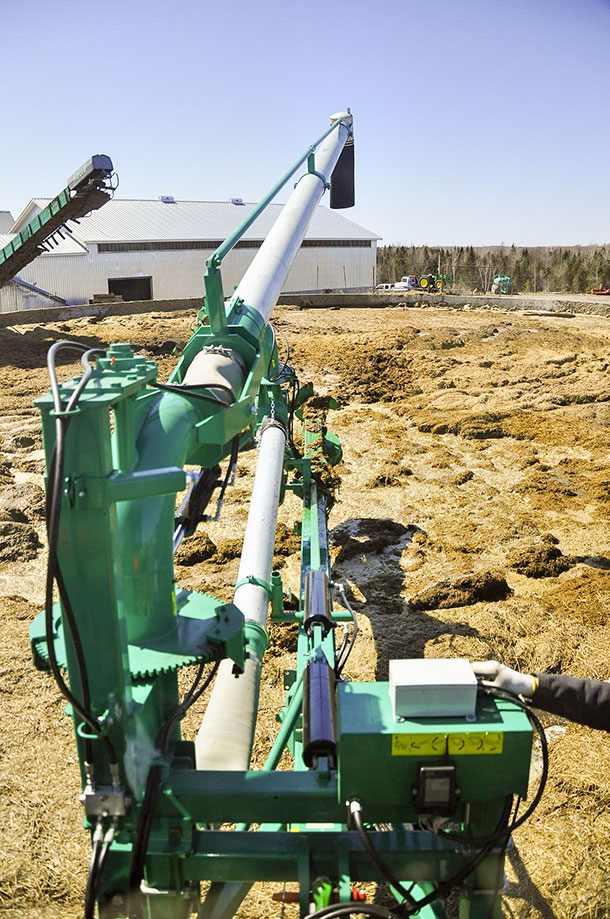It’s estimated that cows, along with the process of milking, produce 20 gallons of manure and 10 gallons of water per cow per day. Add this up and consider the need for six months of storage plus extra storage for a 25-year, 24-hour storm event. When you multiply this across the herd, it’s easy to see where the need for larger lagoons comes in.
But when you get into multimillion-gallon lagoons, agitation efficiency can become a challenge. Agitating millions of gallons of manure takes time, labor and, most importantly, the proper equipment.
Whether you are looking to build a new lagoon or just looking to upgrade your agitation equipment, use the following insights to determine which type of agitation system will provide the best nutrient distribution in the most efficient way possible.

Equipment solutions
From breaking up sediment and breaking through fiber crust to making sure nutrients are evenly distributed – having the right equipment can’t be stressed enough. Options exist at multiple price points, ranging from $10,000 to upwards of $200,000. Take time to find the right solution to fit your herd’s specific needs.
• Lagoon agitators provide ideal homogenization of nutrients with their rapid displacement of manure. This screw-style agitator is backed into the lagoon and agitates manure through a pushing motion of the propeller. When calculating investment cost, consider equipment cost for the agitator and tractor to run the equipment, fuel and labor.
• Agitation boats are free-moving, self-contained units within the lagoon. Agitation boats can agitate from anywhere within the lagoon using a pump and nozzle or propeller system. Lagoon boats can cost up to 10 times more than other agitation equipment. The upside is that no additional equipment is needed, eliminating the need to make sure a tractor is available for use at the time of agitation.
• Lagoon pumps, fitted with a propeller or nozzle, can achieve agitation by taking manure in and quickly pushing it back out. They work as a two-in-one system, agitating the lagoon before switching over to discharge manure for distribution. Similar to lagoon agitators, the investment cost should include fuel and labor.
Nutrient distribution
The turnover rate and efficiency to achieve evenly distributed nutrients are considerations to keep in mind when choosing equipment.
To get the best nutrient distribution before spreading on the field, it’s recommended to turn over the manure three times. For example, a 1-million-gallon lagoon becomes 3 million turnover gallons. The larger the lagoon, the more difficult it is to achieve an efficient turnover.
Different equipment turns manure over at different speeds. A lagoon agitator provides more turnover per minute than any other agitation equipment, displacing up to 33,000 gallons a minute. Lagoon pumps and agitation boats displace significantly less, each averaging only 3,000 to 5,000 gallons a minute.
Time is of the essence
You want to ensure you are achieving manure turnover in an efficient amount of time. Not enough time will result in an uneven distribution of nutrients. Too much time can cause sediments to resettle into the manure.
The amount of equipment needed could change, depending on the size of the lagoon and speed at which manure can be turned over. For example, if you have a 15-million-gallon lagoon, you can achieve agitation in eight hours with just one lagoon agitator. It would take more than 60 hours to agitate the same lagoon with a lagoon pump. To evenly distribute nutrients in an efficient amount of time, you may need multiple agitation pumps operating simultaneously.
Lengthy reach
With large lagoons, the challenge exists to reach as far into the lagoon as needed. Pumps and agitators backed into the lagoon or placed over the wall may have difficulties reaching as far as you need them to.
The length of the lagoon pump or agitator needed is dependent upon the size of your lagoon. If your lagoon is too wide, you may not get successful agitation throughout. Agitation equipment can be up to 72 feet long and have a range of 50 feet of effective agitation.
In comparison, an agitation boat doesn’t have the same restrictions on reach. They are free-moving within the lagoon and can go out in the middle to attack the problem right at the source.
Lagoon design
Design comes into play when determining the best agitation solution for your herd. The ideal lagoon design for use with a lagoon pump or agitator would be three times longer than it is wide. This allows for maximum reach for equipment. With free-moving agitation boats, lagoon width isn’t as critical.
Location of access ramps also becomes essential when looking at the design. Make sure you have proper access ramps available to back pumps or agitators into the lagoon. The larger the lagoon, the more access ramps needed. Agitation boats will also need an access ramp to enter and exit the lagoon.
Lagoon storage and treatment design will also play a role in your agitation process. A properly designed and managed staged lagoon system will help concentrate solids in an easier-to-agitate storage structure. When looking to improve or expand your current setup, a primary storage cell can be incorporated to add new life to an existing lagoon system.
Look out for liners
Consider the type of lagoon lining used. The rapid manure discharge of a lagoon agitator or boat can erode a hole in the floor of a clay-lined lagoon. Plastic lagoon liners can also cause problems. Backing up agitation equipment into the lagoon or agitation boats rubbing against the lagoon edges can cause the liner to tear.
Work with your equipment specialist to choose the right equipment to agitate manure quickly and efficiently without leaving valuable nutrients behind, while maximizing your investment. PD
Jeramy Sanford is a field manager and manure specialist with GEA. Email Jeramy Sanford.
PHOTO: Lagoon agitation breaks up sediments and fiber crust to evenly distribute nutrients throughout the manure. Photo provided by GEA.


.jpg?t=1687979285&width=640)



